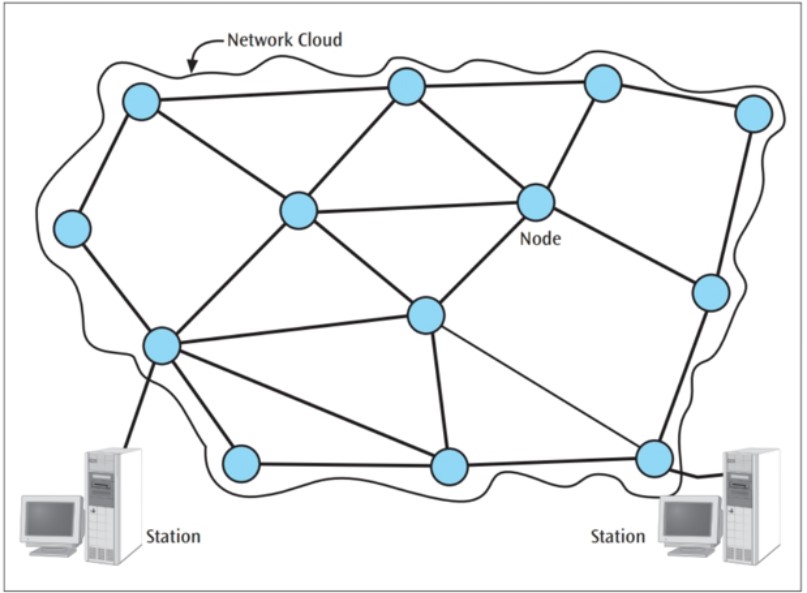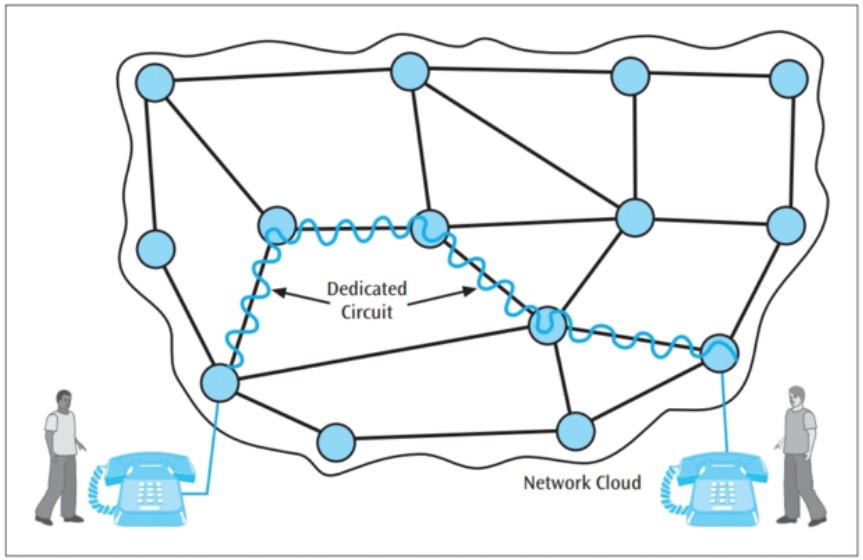Introduction
WAN (Wide Area Network) is one of the most interesting collaboration of technology components. The coverage area of a WAN varies from a country to the entire globe. It is predicted that in future Internet, which is essentially a WAN, will cover the whole solar system. A WAN typically entail myriad of nodes and stations. Network cloud or sub-network is the component that identifies how data is transmitted from source to destination. WAN and network cloud are two different entities, where network cloud is the physical interconnection of nodes and communication lines that makes transfer of data from one point to another point possible (White, 2016). Figure 1 represents a logical network cloud. In this paper we will cover the types of WAN’s network clouds which are (i) Point-to-Point (ii) Circuit Switched and (iii) Packet Switched. Each type establishes a different transmission protocol.

Point-to-Point Networks
In a point-to-point network, the information from one point to another location is transferred via a physical link that connects the source and destination points. The main disadvantage of this network type is cost, due to high cost of implementation and maintenance it does not fits well in most of the scenarios.
Leased-link, which has a speed of 45 Mbps over T3, is a point-to-point network. Leased-link based configuration is becoming obsolete due to emergence and evolution of broadband networks.
Another point-to-point “virtual” network protocol is WebRTC, which is essentially rich content transferring protocol that establishes a peer-to-peer connection between source and destination points. WebRTC is an application layer protocol (WebRTC, 2017).
Circuit Switched Networks
Circuit switch network establishes a dedicated circuit between the sender and receiver. That circuit is exclusively meant to transmit data only related to that current session or call. Once the session has been terminated, the circuit is killed. The main disadvantage of this network type is inefficient circuit utilization, where if the data transmission is sporadic, the circuit will sit idle most of the time.
PSTN (Public Switched Telephone Network) is an example of circuit switched network, where the call data can be transmitted at a speed of 64 Kbps. ISDN (Integrated Services Digital Network) is a circuit switched network as well, where data can be transmitted at a speed up to 128 Kbps (Lifewire, 2019).

Packet Switched Networks
Packet switched networks were created to transfer general type data, where at source the data is broke into segments called packets and then routed over the network cloud. The data is grouped again at the destination. Packet switched networks can be further divided into datagram and virtual circuit networks. In datagram, each data packet is sent using the best route method. In virtual circuit, higher layer protocols such as TCP/IP maintain a virtual dedicated tunnel that is used for routing all the packets of a particular session. The major advantage of a packet-switch network is cost effectiveness.
Fiber optic based broadband is a packet-switched network, where data can be transmitted at a speed of up to 76 Mbps (Health, 2019). ADSL (Asymmetric Digital Subscriber Loop) is another packet-switched network where the data can be transmitted at a speed of up to 24 Mbps.
Conclusion
We discussed different kind of network cloud types in WAN, each has its own merits and trade-offs. By far the packet switch networks seem to be the best choice in most of the cases. It is cost effectiveness and scalable. It might not be suitable for some infrastructures, such as for cellular carriers because they cannot afford voice packets being lost. Work is being done to further evolve the packet switch networks.
References
White, C. (2016). Data communications & computer networks (8th ed.). Boston, MA: Cengage Learning.
WebRTC (2019). Architecture. Retrieved from https://webrtc.org/architecture/"
Lifewire (2019). Overview of Integrated Services Digital Network (ISDN). Retrieved from https://www.lifewire.com/integrated-services-digital-network-817780
Health, M. (2019). What is fiber broadband? Retrieved from https://www.increasebroadbandspeed.co.uk/what-is-fibre-broadband

